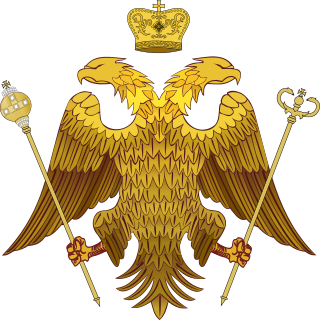
The Church of Cyprus is one of the autocephalous Greek Orthodox churches that together with other Eastern Orthodox churches form the communion of the Eastern Orthodox Church. It is one of the oldest Eastern Orthodox autocephalous churches; it claims to have always been independent, although it may have been subject to the Church of Antioch before its autocephaly was recognized in 431 at the Council of Ephesus. The bishop of the ancient capital, Salamis was constituted metropolitan by Emperor Zeno, with the title archbishop.

The Catholic Church in Cyprus is part of the worldwide Catholic Church, under the spiritual leadership of the Pope in Rome.
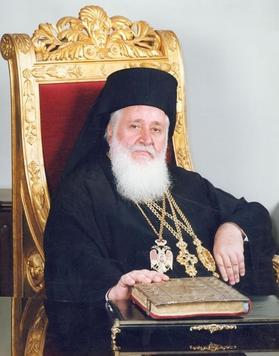
Chrysostomos I, born Christoforos Aristodimou, was the Archbishop of Cyprus from 1977 to 2006.
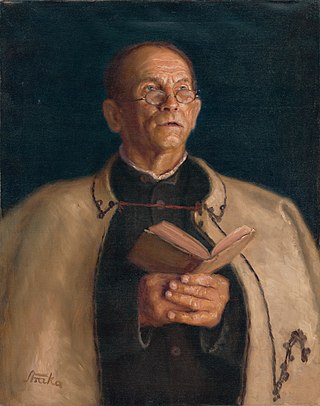
In Christianity, the cantor, female chantress, sometimes called the precentor or the protopsaltes, is the chief singer, and usually instructor, employed at a church, with responsibilities for the choir and the preparation of the Mass or worship service. The term is also used for a somehow similar task in Reform Judaism and in Ancient Egypt.

Selimiye Mosque, historically known as Cathedral of Saint Sophia or Ayasofya Mosque, is a former Christian cathedral converted into a mosque, located in North Nicosia. It has historically been the main mosque on the island of Cyprus. The Selimiye Mosque is housed in the largest and oldest surviving Gothic church in Cyprus possibly constructed on the site of an earlier Byzantine church.
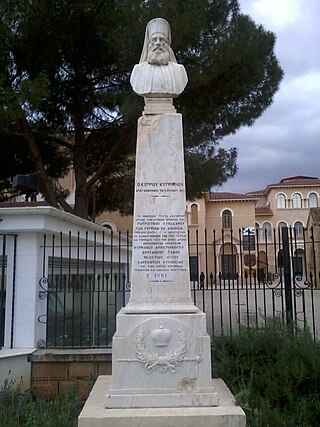
Archbishop Kyprianos of Cyprus was the head of the Cypriot Orthodox Church in the early 19th century at the time that the Greek War of Independence broke out.
Religion in Cyprus is dominated by Eastern Orthodox branch of Christianity, whose adherents make up 73% of the total population of the entire island. Most Greek Cypriots are members of the autocephalous Greek Orthodox 'Church of Cyprus'. Most Turkish Cypriots are officially Sunni Muslims. There are also Baháʼí, Catholic, Jewish, Protestant, Maronite, Armenian Apostolic, and non-religious communities in Cyprus.
Polemi is a village in the Paphos District of Cyprus.
Neophytos of Cyprus, Saint Neophytos, Neophytos the Recluse was a Cypriot Orthodox monk, priest, and sometime hermit, whose writings preserved a history of the early crusades. "He is considered to be one of the most significant figures of the Church of Cyprus"
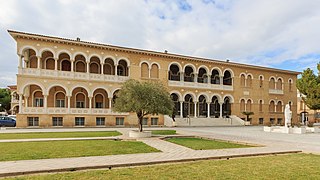
Archbishop's Palace is the official residence and office of the archbishop of Cyprus located in Nicosia. The palace was built next to the "Old Archbishop's Palace", between 1956 and 1960; in neo-Byzantine architectural style. Its general plans were designed by George Nomikos in Athens, while Nicholas S. Roussos and John Pericleous from Limassol were responsible for all other architectural work. The bronze sculpture of Makarios III, the first president of Cyprus, was on its grounds but has now been moved the monastery of Kykkos. It was sculpted by Nikolas Kotziamannis, weighs around 13 tons and is approximately 30 feet tall. Although the Archbishop's Palace is not open to the public; the Byzantine Museum, Library of the Archbishopric, Folk Art Museum and the National Struggle Museum located on its grounds are open to the public.
Konstantinos Psachos was a Greek scholar, educator, musician, composer, cantor and musicologist.
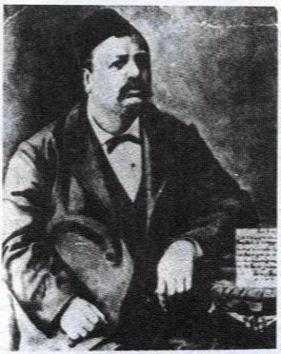
George Rhaedestenos II was acting Lambadarios of the Ecumenical Patriarchate of Constantinople, when Stephen the Lambadarios was old and weak. He was an unimmitable performer of psaltic art, and second to none of his contemporary cantors; he was especially renowned for his ancient-like patriarchal chanting style.
This is a timeline of the presence of Eastern Orthodoxy in Greece from 717 to 1204. The history of Greece traditionally encompasses the study of the Greek people, the areas they ruled historically, as well as the territory now composing the modern state of Greece.
This is a timeline of the presence of Eastern Orthodoxy in Greece from 1821 to 1924. The history of Greece traditionally encompasses the study of the Greek people, the areas they ruled historically, as well as the territory now composing the modern state of Greece.
Doula Mouriki was a Greek Byzantinologist and art historian. She made important contributions to the study of Byzantine art in Greece.

Christianity in Cyprus is the largest religion in the country, making up 78% of the island's population. The largest Christian denomination is the Greek Orthodox Church, while the rest are smaller communities of Anglicans, Roman Catholics, Latin Christians, Maronites, Armenian Apostolics, and Greek Evangelicals.

The Pan-Orthodox Council, officially referred to as the Holy and Great Council of the Orthodox Church, was a synod of set representative bishops of the universally recognised autocephalous local churches of the Eastern Orthodox Church held in Kolymvari, Crete. The Council sat from 19 to 26 June 2016.

Elder Ephraim of Vatopedi is a Greek Cypriot Orthodox Christian hieromonk and archimandrite. He is currently Abbot of the Holy Monastery of Vatopedi at Mount Athos.
The 2022 Cypriot archiepiscopal election held on 18 December 2022 to elect the new Archbishop of the Church of Cyprus following the death of the previous Archbishop, Chrysostomos II.

George is the current Archbishop of Cyprus since 8 January 2023.













